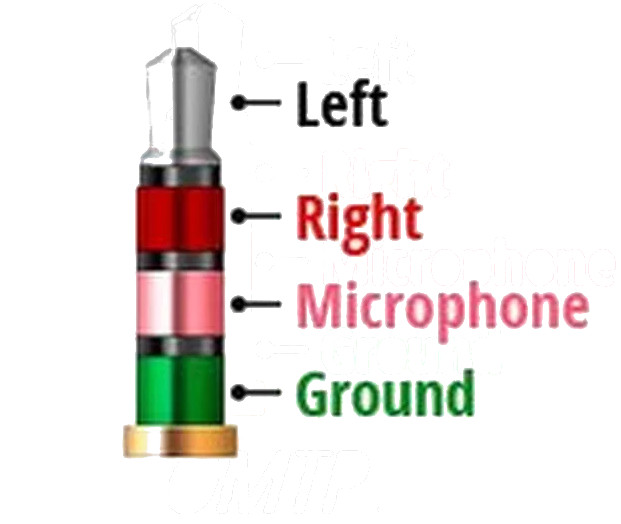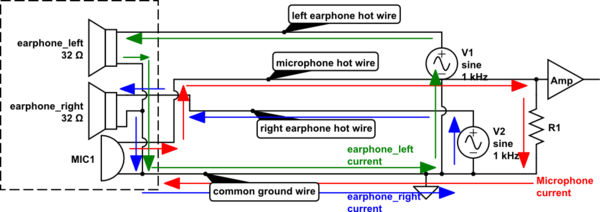It sounds like you have a lot of misconceptions about how electric signals work.
It sounds like you're thinking that a signal has to travel in the same direction as the current. That's not true; the direction of the current and the direction that the signal goes are actually unrelated.
It also sounds like you're thinking that the Left, Right, and Mic wires are always at a positive voltage relative to Ground. That's not true either; the Left and Right wires are positive about half of the time and negative about half of the time. (However, you're right about the Mic wire; that one is always positive, because it's also used to supply power to the microphone.)
So how does it actually work?
Audio signals are voltage signals, and a voltage is always defined as the difference between two conductors. So, the Left signal is transmitted using the difference between the Left wire and the Ground wire; the Right signal is transmitted using the difference between the Right wire and the Ground wire; and the Mic signal, the difference between the Mic wire and the Ground wire.
We usually imagine that the Ground wire carries no information and merely acts as a reference for the other wires. Technically, if we wanted to, it would be equally valid for us to imagine that, say, the Left wire carries no information, and the Right and Ground wires carry the stereo audio signal. But that would be a really confusing way of thinking about things. Instead of doing that, we choose to do things the easy way: we choose to think of the Ground wire as the reference.
So, that leaves us with three wires that carry information: Left, Right, and Mic. From now on, I'm going to write "the voltage of the Left wire" when what I really mean is "the voltage of the Left wire relative to ground."
So, imagine that you plug a headset into a laptop. How do the signals get transmitted between the two devices?
Well, the laptop has components in it that allow it to change the voltage on the Left wire and the voltage on the Right wire. So the laptop changes those voltages very rapidly, making them higher (more positive) when the audio signal is higher and lower (more negative) when the audio signal is lower. The headset has components in it that allow it to detect what the voltages on the Left and Right wires are. So the headset looks at those voltages and produces a sound corresponding to the way that those voltages are changing.
That's how the laptop sends signals to the headset using the Left, Right, and Ground wires.
Also, the headset has components in it that allow it to change the voltage on the Mic wire, and the laptop has components in it that allow it to see what the voltage on the Mic wire is. So the headset does the same thing the laptop did: it moves the voltage on the Mic wire up and down according to the incoming sound. Then the laptop looks at the way the voltage is changing, and converts that information into a digital signal that the software on the laptop can use.
That's how the headset sends a signal to the laptop using the Mic and Ground wires.
The Mic wire is a bit of a weird case, because it carries power from the laptop to the microphone and it carries a signal from the microphone to the laptop. Basically, what happens is that the laptop is always pulling the voltage up, but, if I understand correctly, it pulls it up with a certain amount of "gentleness" (impedance), and then the microphone is able to send a signal by controlling the exact voltage.



